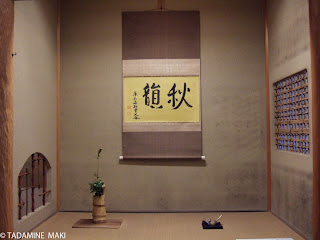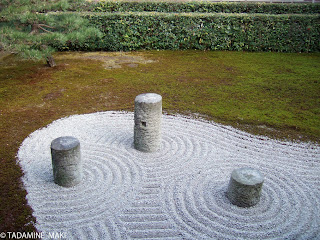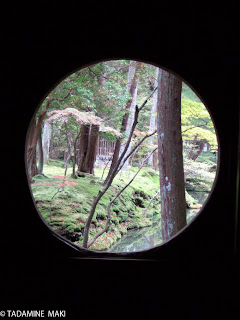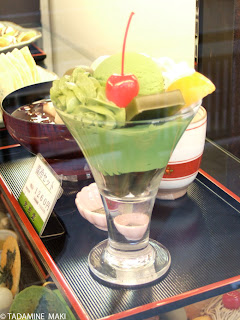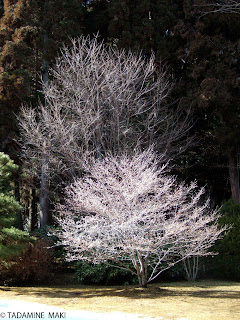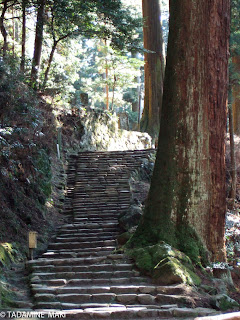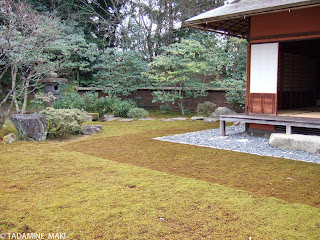
We can see a garden from the opening of a wooden building.
The garden is consisted of pond, stones and some vegetation. The stones express the waterfall and carp going up the fall, though it is hard to find the fall and fish by this photo....
By the way, Japanese gardens tend to have less straight lines and geometric patterns and more curves than the gardens in Europe. The main three reasons are the following:
First, many Japanese gardens re-create the natural scenery found in Japanese classic tales and Chinese myths. The vistas are re-created by the natural elements and then the gardens have more curves.
Second, some of the gardens are designed to take the natural surroundings into the gardens themselves. The gardens are not closed in terms of designing, but open to the outer. So some vegetation are put in the gardens to join the inner to the outer of the gardens softly.
Third, the designers don't tend to control the nature but take advantage of it into the gardens, thinking about the dramatic change of the season. They decided the location of the elements in the gardens and carefully chose the materials to make these elements look "as they are". The "as they are" is eventually based on the idea that the nature does not hurt us and that it give us a great blessing. That the rich forest and water give us many gifts to live with.
The gardens are, in this way, consisted of the natural things with curves. But only a line or flat surface exists. This is the surface of a pond. Ponds are usually located at the center of the Japanese gardens. The flat mirror, the pond, unites the whole garden and it can join the garden to the architecture, mainly composed of many lines.
Location by Google MapLabels: design, garden, Kyoto, pond



